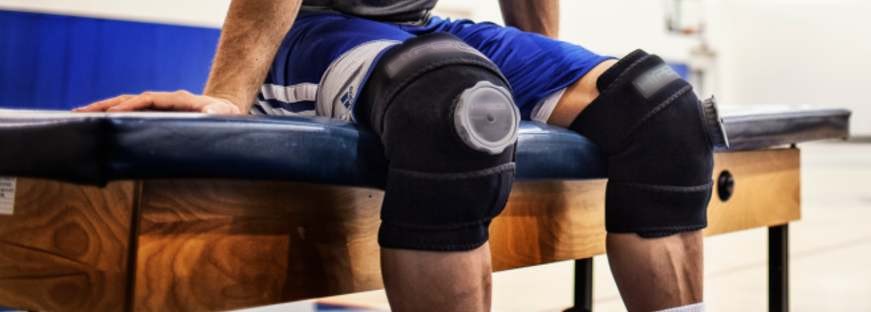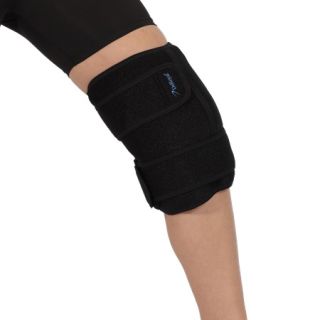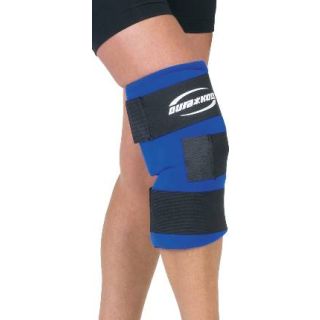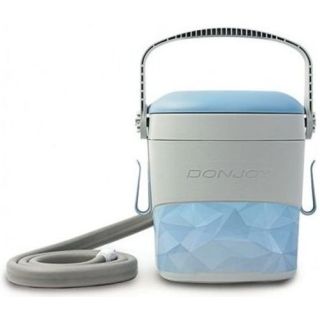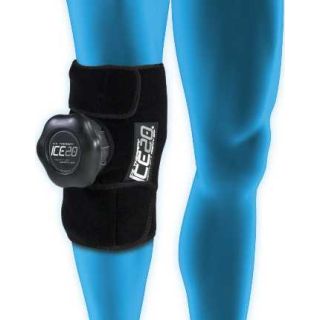Ice Or Heat For Knee Pain
April 14, 2025Ice or Heat for Knee Pain: A Comprehensive Guide
Knee pain is common across all ages and can come from injuries, arthritis, overuse, or ongoing health issues. When deciding how to manage knee pain at home, one of the most frequent questions is whether to apply ice or heat.
Ice and heat each help knee pain in different ways, and knowing when to use them can boost relief and recovery.
This article explains how ice and heat therapy work for knee pain, their benefits, risks, and guidelines to help people choose wisely.
Understanding Knee Pain and Its Causes
To understand ice and heat therapy, we first need to know what causes knee pain. The knee is a complex joint that carries a lot of weight and moves a lot, so it’s prone to injury and wear. Common causes of knee pain include:
-
Acute Injuries: Sprains, strains, torn ligaments (like ACL or MCL), meniscus tears, or fractures usually happen from sudden injuries, like falls or sports accidents.
-
Chronic Conditions: Osteoarthritis, rheumatoid arthritis, or patellar tendinitis can cause ongoing inflammation and stiffness in the knee.
-
Overuse Injuries: Repeated actions like running or jumping can cause issues like runner’s knee or bursitis.
-
Post-Surgical Pain: Knee surgeries, like arthroscopy or replacements, often cause swelling and discomfort while healing.
-
Other Causes: Infections, gout, or referred pain from the hip or lower back can also manifest as knee pain.
The type and cause of knee pain play a critical role in determining whether ice or heat is more appropriate. Acute injuries typically involve inflammation and swelling, while chronic conditions may involve stiffness or muscle tension. Let’s examine how ice and heat work to address these symptoms.
The Science Behind Ice Therapy
Ice therapy, also known as cryotherapy, involves applying cold to the affected area to reduce pain and inflammation. Ice on the skin narrows blood vessels, reducing blood flow to the area. This reduces swelling, inflammation, and nerve activity, providing pain relief.
Benefits of Ice for Knee Pain
-
Reduces Inflammation and Swelling: Ice works well for new injuries like a sprained knee or meniscus tear by reducing swelling. By limiting blood flow, ice minimizes fluid buildup in the joint.
-
Numbs Pain: Cold temperatures dull nerve endings, temporarily reducing pain signals sent to the brain. This makes ice an excellent choice for immediate pain relief after an injury.
-
Prevents Further Tissue Damage: In cases of acute trauma, excessive swelling can exacerbate tissue damage. Ice helps control this process, protecting the joint.
-
Post-Activity Relief: For individuals with chronic conditions like arthritis, ice can soothe flare-ups caused by physical activity.
When to Use Ice
Ice is most effective in the following scenarios:
-
Acute Injuries: Apply ice within the first 48–72 hours after a knee injury to control swelling and pain.
-
Post-Surgical Recovery: Ice is commonly used after knee surgery to reduce swelling and pain.
-
Inflammatory Conditions: Conditions like bursitis or arthritis flare-ups benefit from ice to reduce joint inflammation.
-
After Exercise: If exercise exacerbates knee pain, ice can calm the joint and prevent swelling.
How to Apply Ice
-
Method: Use a commercial ice pack, a bag of frozen vegetables, or crushed ice wrapped in a cloth. Never apply ice directly to the skin to avoid frostbite or irritation.
-
Duration: Apply ice for 15–20 minutes every 2–3 hours during the first 48 hours after an injury. For chronic pain, use as needed.
-
Precautions: Monitor the skin for signs of excessive cold (e.g., redness or numbness). Individuals with poor circulation, diabetes, or cold sensitivity should consult a doctor before using ice.
The Science Behind Heat Therapy
Heat therapy, or thermotherapy, involves applying warmth to the affected area to promote relaxation and improve blood flow. Heat causes vasodilation (widening of blood vessels), which enhances circulation, delivers oxygen and nutrients to tissues, and relaxes muscles and connective tissues. Heat increases blood flow to the area.
Benefits of Heat for Knee Pain
-
Relieves Stiffness: Heat is ideal for chronic conditions like osteoarthritis, where stiffness limits mobility. It loosens the joint and surrounding tissues.
-
Improves Blood Flow: Enhanced circulation helps repair damaged tissues and reduces muscle spasms, which can contribute to knee pain.
-
Relaxes Muscles: Tight quadriceps, hamstrings, or calf muscles can exacerbate knee pain. Heat therapy soothes these muscles, reducing strain on the joint.
-
Pre-Activity Preparation: Heat before exercise warms the knee, boosting flexibility and lowering injury risk.
When to Use Heat
Heat is most appropriate in the following situations:
-
Chronic Knee Pain: Conditions like osteoarthritis or tendinitis benefit from heat to alleviate stiffness and improve mobility.
-
Muscle Tightness: If knee pain is accompanied by tight or sore muscles, heat can relax them.
-
Before Activity: Use heat to warm up the knee joint before physical therapy or exercise.
-
Non-Inflammatory Pain: For pain without significant swelling, such as in fibromyalgia or overuse injuries, heat can provide relief.
How to Apply Heat
-
Method: Use a heating pad, warm towel, hot water bottle, or microwavable heat pack. Moist heat (e.g., a warm bath) can penetrate deeper into tissues.
-
Duration: Apply heat for 15–20 minutes at a time. Avoid prolonged exposure to prevent burns or skin irritation.
-
Precautions: Do not use heat on open wounds, swollen areas, or if the skin is hot to the touch. Individuals with heart conditions, poor sensation, or burns should consult a healthcare provider.
Ice vs. Heat: Key Differences and Decision-Making
Choosing between ice and heat depends on the nature of the knee pain, the timing of the injury, and the symptoms present. Here’s a breakdown to guide decision-making:
| Factor | Ice | Heat |
|---|---|---|
| Best For | Acute injuries, swelling, inflammation | Chronic pain, stiffness, muscle tension |
| Timing | First 48–72 hours post-injury | After inflammation subsides |
| Effect on Blood Flow | Decreases (vasoconstriction) | Increases (vasodilation) |
| Primary Benefit | Reduces swelling and numbs pain | Relaxes muscles and improves mobility |
| Contraindications | Poor circulation, cold sensitivity | Swelling, acute inflammation, open wounds |
General Guidelines
-
Acute Pain (Sudden Onset): Start with ice to control swelling and pain. After 48–72 hours, if stiffness persists, consider transitioning to heat.
-
Chronic Pain (Ongoing): Heat is usually more effective for long-term conditions, but ice may be used after activity to manage flare-ups.
-
Uncertain Cases: If unsure, try ice first, as it’s less likely to worsen symptoms. Alternatively, consult a healthcare professional for personalized advice.
-
Combination Therapy: For some conditions, alternating ice and heat (contrast therapy) can be beneficial. For example, use ice for 10 minutes, followed by heat for 10 minutes, to reduce swelling while promoting circulation.
Risks and Precautions
While ice and heat are generally safe, improper use can lead to complications:
-
Ice Risks: Prolonged ice application can cause frostbite, nerve damage, or skin irritation. Avoid using ice on areas with impaired sensation or circulation.
-
Heat Risks: Excessive heat can cause burns, dehydration, or worsen inflammation in acute injuries. Avoid heat on swollen or bruised areas.
-
Medical Conditions: Individuals with diabetes, cardiovascular disease, or skin conditions should seek medical advice before using either therapy.
-
Children and Elderly: Special care is needed, as these groups may have heightened sensitivity to temperature extremes.
Always wrap ice or heat sources in a cloth to protect the skin, and check the skin frequently during application.
Complementary Treatments for Knee Pain
Ice and heat are valuable tools, but they work best as part of a broader treatment plan. Consider these complementary approaches:
-
Rest and Elevation: Resting the knee and elevating it above heart level can reduce swelling, especially after an acute injury.
-
Compression: Using a knee brace or wrap can stabilize the joint and minimize swelling.
-
Medications: Over-the-counter pain relievers like ibuprofen or acetaminophen can complement ice and heat therapy to relieve pain.
-
Physical Therapy: Exercises to strengthen the quadriceps, hamstrings, and calves can improve knee stability and reduce pain.
-
Medical Evaluation: Persistent or severe knee pain warrants a visit to a doctor or orthopedic specialist to diagnose underlying issues and rule out serious conditions.
When to Seek Professional Help
While ice and heat can manage mild to moderate knee pain, certain symptoms indicate the need for professional evaluation:
-
Severe pain or swelling that doesn’t improve after 48 hours.
-
Inability to bear weight on the knee or significant instability, or loss of range of motion.
-
Visible deformity or locking of the knee joint.
-
Signs of infection, such as redness, warmth, or fever.
-
Persistent pain despite home remedies.
A healthcare provider may recommend imaging (e.g., X-ray, MRI), physical therapy, or, in some cases, surgical intervention.
Conclusion
Deciding whether to use ice or heat for knee pain depends on the cause, timing, and symptoms of the discomfort. Use ice for new injuries, swelling, or inflammation, and heat for ongoing stiffness or tight muscles.
Knowing how ice and heat work and using them correctly helps manage knee pain at home. However, ice and heat are not cure-alls—persistent or severe pain requires professional evaluation to address underlying issues.
Using ice and heat with rest, exercise, and doctor’s advice can improve recovery and keep knees healthy.
Additional Resources:
Alternating Hot And Cold Therapy
